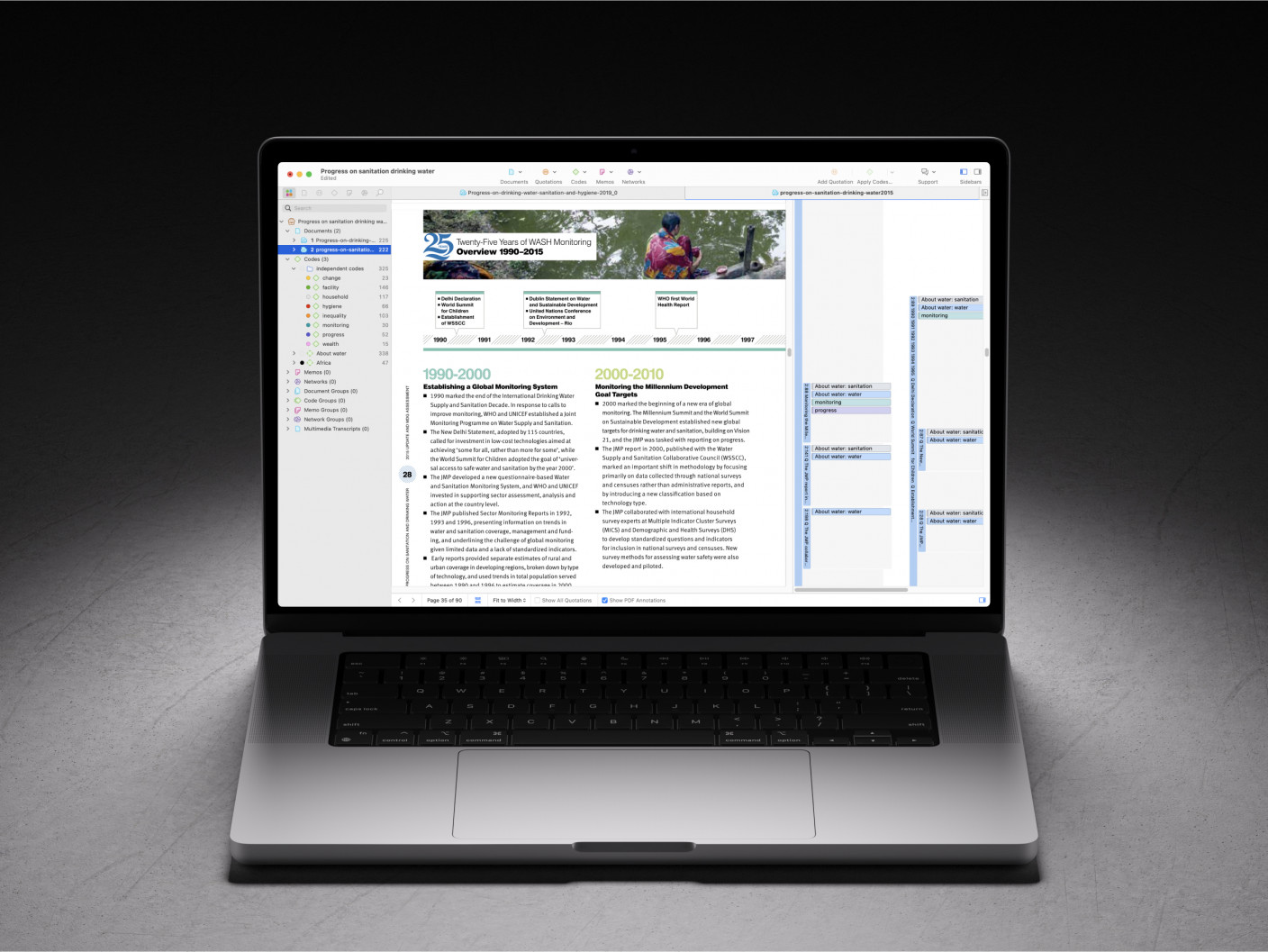- What is Mixed Methods Research?
- Advantages of Mixed Methods Research
- Challenges in Mixed Methods Research
- Common Mistakes in Mixed Methods Research
- Mixed Methods Research Paradigms
- Validity & Reliability in Mixed Methods Research
- Ethical Considerations in Mixed Methods Research
- Mixed Methods vs. Multiple Methods Research
- Mixed Methods Research Designs
- How to Choose the Right Mixed Methods Design
- Convergent Parallel Design
- Explanatory Sequential Design
- Exploratory Sequential Design
- Embedded Mixed Methods Research Design
- Transformative Mixed Methods Design
- Multiphase Mixed Methods Research Design
- How to Conduct Mixed Methods Research
- Sampling Strategies in Mixed Methods Research
- Data Collection in Mixed Methods Research
- Triangulation in Mixed Methods Research
- Data Analysis in Mixed Methods Research
- How to Integrate Quantitative & Qualitative Data?
- How to Interpret Mixed Methods Research Findings?
- Software Tools for Mixed Methods Data Analysis
- How to Write a Mixed Methods Research Proposal
- How to Write a Mixed Methods Research Paper?
- Reporting Results in Mixed Methods Research
- Mixed Methods Research Examples
- How to cite "The Guide to Mixed Methods Research"
Advantages of Mixed Methods Research
Mixed methods research uses quantitative and qualitative data to generate new insights that any single kind of data collection could not provide on its own. But why would a researcher spend a longer amount of time collecting and analyzing two different kinds of data, each with their own methodology? In this article, we will discuss the key advantages of mixed methods research and share examples of when this method was an advantage over quantitative and qualitative research methods on their own.

Introduction
Sociological research relies on organized methods for examining social groups, institutions, and interactions. Researchers often use interviews, surveys, participant observation, and document review to gather information that addresses specific questions. Selecting the right method depends on the research goals, as each approach can illuminate different aspects of social life.
To begin, scholars typically identify a research question or topic, consult previous findings, formulate a guiding question, and then choose a suitable method. This article covers these core methods and suggests ways to decide which approach fits a particular project. By following a planned strategy, sociological researchers can collect meaningful data and offer well-founded explanations for a particular social environment or phenomenon.
What are the main advantages of mixed methods research?
Mixed methods research opens doors to deeper insights and richer understanding by weaving together the numerical precision of quantitative data with the narrative depth of qualitative findings. Here are some of the main advantages of mixed methods research:
Comprehensive analysis of qualitative and quantitative data
Mixed methods research provides a comprehensive analysis by integrating quantitative and qualitative data. The quantitative component offers numerical precision and statistical generalizability, while the qualitative component adds contextual understanding and rich descriptions. Creswell (2018) highlights that this integration lets researchers understand social and human problems better, as researchers can explore both measurable trends and the meanings behind them. As an example, in health systems research, mixed methods enable the study of both patient outcomes and the social contexts influencing those outcomes, offering a fuller picture of healthcare challenges (Ozawa & Pongpirul, 2014). By combining these complementary methods, mixed methods research generates insights that are more complete and actionable than those derived from a single methodological approach.
The quantitative component of mixed methods research offers the advantage of generalizability. Quantitative data tends to be relatively "thin," but it comprises a substantial number of individuals or data points, offering valuable breadth in the analysis. Using tools like surveys or experiments, researchers can collect data from large samples, identify patterns, and draw statistically robust conclusions. This aspect is particularly useful in detecting trends, testing hypotheses, or establishing relationships between variables. For example, in public health research, quantitative data might reveal the prevalence of a disease or the effectiveness of a treatment on a population level.
In contrast, the qualitative component provides depth and context by exploring the “how” and “why” behind the numbers. Qualitative data is usually "thick" with detailed information, but it tends to be collected from relatively few individuals or cases, prioritizing depth of understanding over statistical generalizability. Through interviews, focus groups, or observations, qualitative data captures the lived experiences, perceptions, and motivations of individuals. This richness is crucial for understanding complex social phenomena or the factors influencing human behavior. For instance, while quantitative data might show low vaccination rates in a community, qualitative interviews could uncover cultural beliefs or systemic barriers contributing to this trend.
Mixed methods research also excels in addressing multi-layered problems where interactions between variables and contexts are critical. In social sciences, for example, quantitative surveys might measure the level of social support within a population, while qualitative focus groups explore the subjective meanings of support in different cultural or economic settings. This provides a more nuanced understanding that makes the findings relevant to both academic and applied contexts.
The ability to address broad trends while explaining the underlying reasons for them makes mixed methods research particularly effective for problem-solving.

Flexibility for addressing complex research questions
Mixed methods research offers flexibility and adapts to diverse research questions and contexts. This advantage is particularly valuable when studying complex or under-researched topics, as the integration of methods can provide answers to both broad and specific inquiries. Researchers can tailor their methodological choices to suit the nature of the research problem. For example, researchers can combine exploratory qualitative phases with confirmatory quantitative phases to generate richer insights and to address complex, multi-dimensional questions. It lets researchers adapt their methodology to the specific needs of their study. Whether the research requires exploratory, descriptive, or explanatory approaches, mixed methods can be customized to fit diverse research objectives and challenges.
When studying a new or poorly understood phenomenon, researchers can begin with qualitative methods to explore the subject in depth and identify key themes. These findings can then inform the design of quantitative tools, such as surveys or experiments, which validate and generalize the initial insights. This iterative process ensures that both broad trends and nuanced details are captured, offering a fuller picture of the research problem (Migiro & Magangi, 2011).
Another example of this flexibility is when researchers see unexpected findings and evolving research contexts. For example, during a study on healthcare access, initial quantitative surveys might reveal disparities in service utilization. Qualitative follow-up interviews can then explore why these disparities exist, uncovering factors such as cultural barriers or systemic inefficiencies.
The flexibility of mixed methods research empowers researchers to tackle complex questions from multiple angles, bridging gaps in knowledge and providing solutions that are both grounded in data and responsive to real-world needs. This adaptability is particularly valuable in dynamic fields such as healthcare, social sciences, and public policy, where challenges often demand a multi-faceted understanding.
Triangulation of insights
Triangulation, a key advantage of mixed methods, enhances the validity and reliability of findings by combining multiple data sources and methods to cross-verify results. Triangulation is the process of seeking differences and corroboration by comparing findings from qualitative data with quantitative insights. Triangulation helps researchers overcome the limitations of relying solely on qualitative or quantitative methods and provides results that are more robust and trustworthy. By juxtaposing qualitative insights with quantitative findings, researchers can identify consistencies and discrepancies, leading to stronger, well-substantiated conclusions.
Quantitative studies can be great at describing relationships between variables but can be limited in understanding why this relationship unfolds the way it does. On the other hand, qualitative studies can be great at shedding light on unexpected findings but can be limited in understanding the extent to which these insights can be applied to other contexts or groups of people.
For example, in a health systems study, survey data might quantitatively highlight a lack of access to healthcare services, while qualitative interviews with patients could reveal barriers such as cultural stigmas or transportation challenges. Triangulation could confirm the accuracy of these findings and unearth complex relationships that single-method studies might overlook. By triangulating statistical data with personal narratives, quantitative trends can be contextualized with real-world experiences, leading to actionable insights. To inform urban planning, triangulation might involve integrating quantitative geographic data, qualitative interviews with community members, and observational studies of public spaces.
Support multiple stakeholders and interdisciplinary collaboration
Mixed methods welcome an inclusive approach that brings together diverse stakeholders and disciplines. Stakeholder engagement can be enhanced through mixed methods research because different data collection and analysis techniques resonate with varying stakeholder needs and preferences. Policymakers sometimes rely on quantitative data for decision-making, while community members or practitioners might find qualitative narratives more relatable and insightful. By combining these methods, researchers can communicate findings effectively to all groups, ensuring that their voices are incorporated throughout the research process.
Interdisciplinary collaboration is another significant advantage of mixed methods research. Complex problems often transcend the boundaries of single disciplines, requiring input from diverse fields such as sociology, psychology, economics, and medicine. Mixed methods provide a framework that accommodates the epistemological and methodological differences inherent in these fields. For example, quantitative methods may satisfy the analytical rigor required in some disciplines, while qualitative methods can address the nuanced understanding sought by other disciplines. This alignment promotes a collaborative environment where disciplines can work together effectively and leverage their strengths to develop well-rounded solutions.

Increased publishing opportunities
Mixed methods research expands publishing opportunities for researchers by catering to a broader range of journals and audiences. As this approach integrates qualitative and quantitative methodologies, researchers can submit their findings to journals that specialize in either or both types of research. This versatility is particularly valuable in interdisciplinary fields, where journals often prioritize studies that show multi-faceted analyses. The increasing recognition of mixed methods as a robust and flexible approach has led to dedicated journals, such as the Journal of Mixed Methods Research.
Mixed methods research aligns with the growing demand for interdisciplinary studies, making it highly publishable in journals that prioritize cross-disciplinary collaboration and innovation. Mixed methods studies often address complex, real-world problems by combining diverse perspectives and methods. This increases publication potential as it broadens the research relevance to multiple fields and enhances its appeal to a wider academic and professional audience.
Conclusion
Mixed methods research offers a dynamic approach that enhances the depth and breadth of analysis by integrating qualitative and quantitative data. This combination allows researchers to explore complex research questions more effectively, providing both statistical generalizability and contextual understanding. The ability to triangulate insights strengthens the validity of findings, while the flexibility of this approach enables researchers to adapt their methodology based on the evolving needs of their study.
Beyond methodological advantages, mixed methods research offers interdisciplinary collaboration and engages multiple stakeholders by presenting findings in ways that resonate with different audiences. It supports real-world applications in areas such as healthcare, social sciences, and public policy, where comprehensive insights are essential for informed decision-making. Additionally, this approach increases publishing opportunities, as it appeals to journals that prioritize robust, multi-dimensional analyses.
By leveraging the strengths of both qualitative and quantitative methods, mixed methods research provides a more complete picture of complex issues. Researchers who adopt this approach can generate richer, more actionable findings that contribute meaningfully to their fields.
References
- Creswell, J. W. (2018). Research design: Qualitative, quantitative, and mixed methods approaches (5th ed.). SAGE Publications.
- Migiro, S.O. & Magangi, B.A.. (2011). Mixed methods: A review of literature and the future of the new research paradigm. African journal of business management. 5. 3757-3764.
- Ozawa, S., & Pongpirul, K. (2014). 10 best resources on... mixed methods research in health systems. Health Policy and Planning, 29(3), 323–327. https://doi.org/10.1093/heapol/czt019


